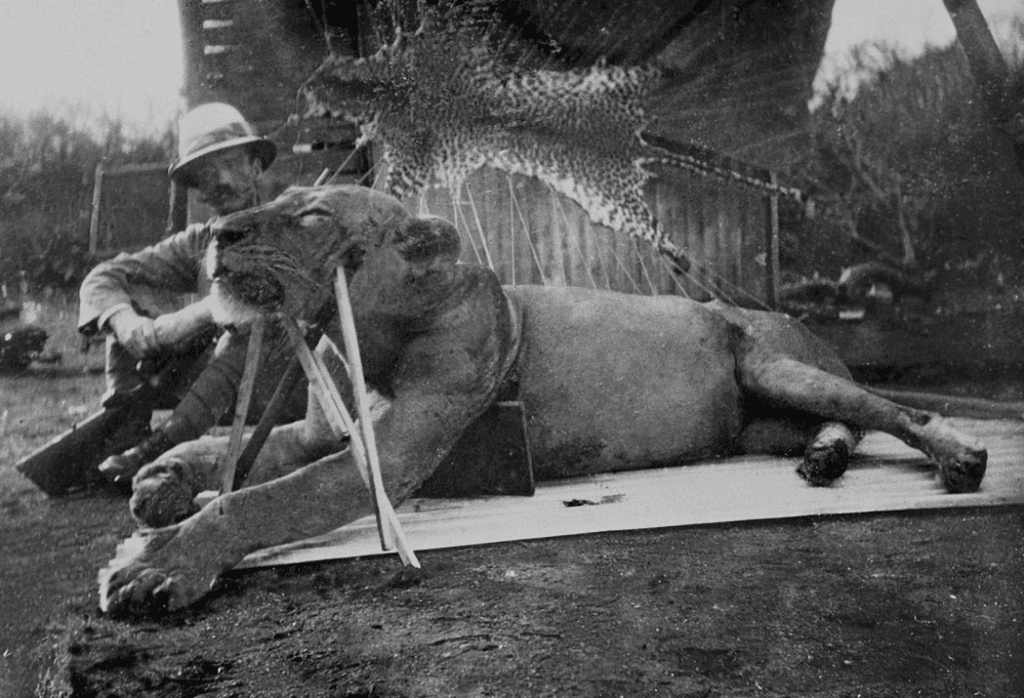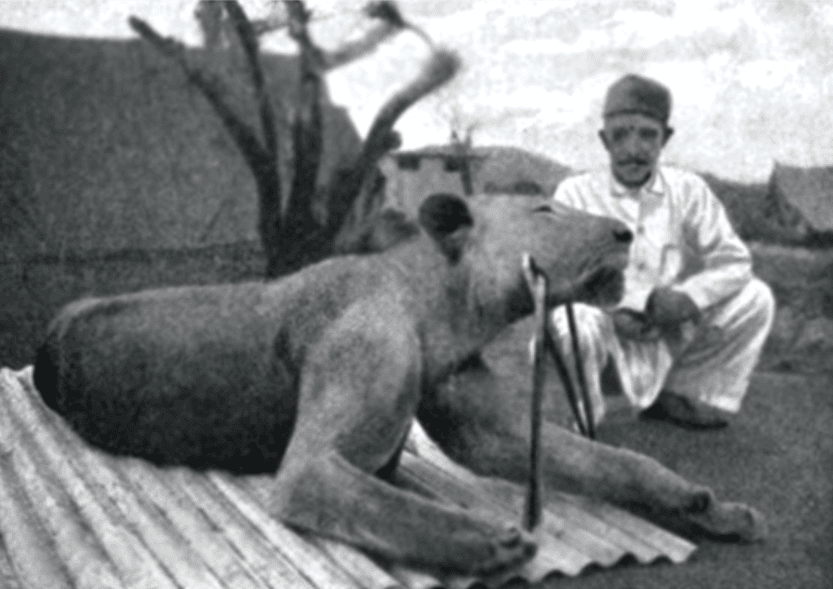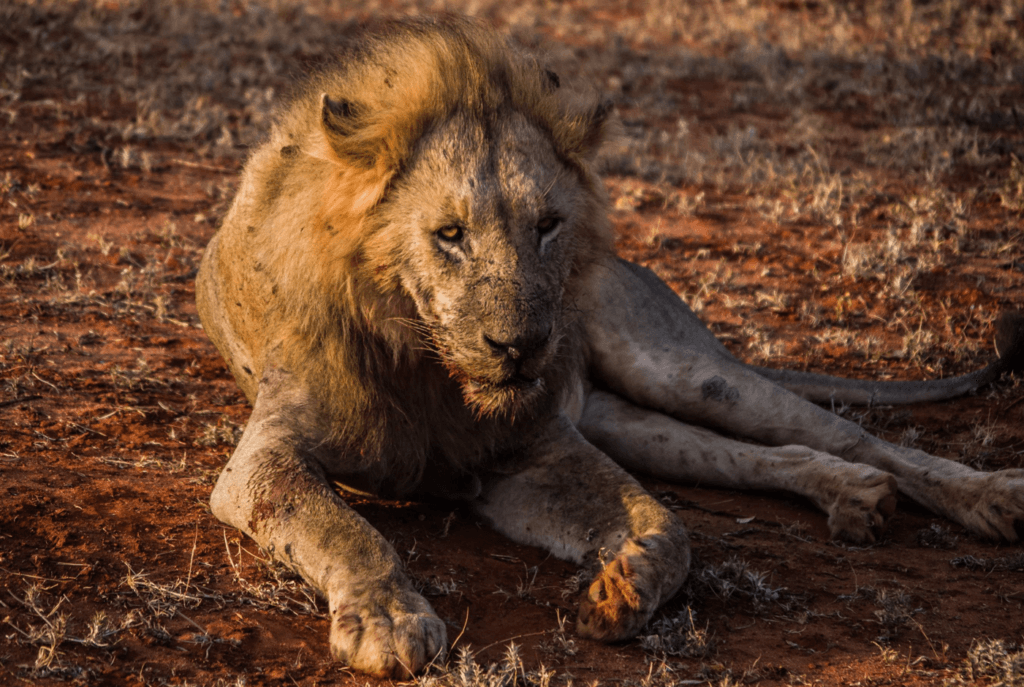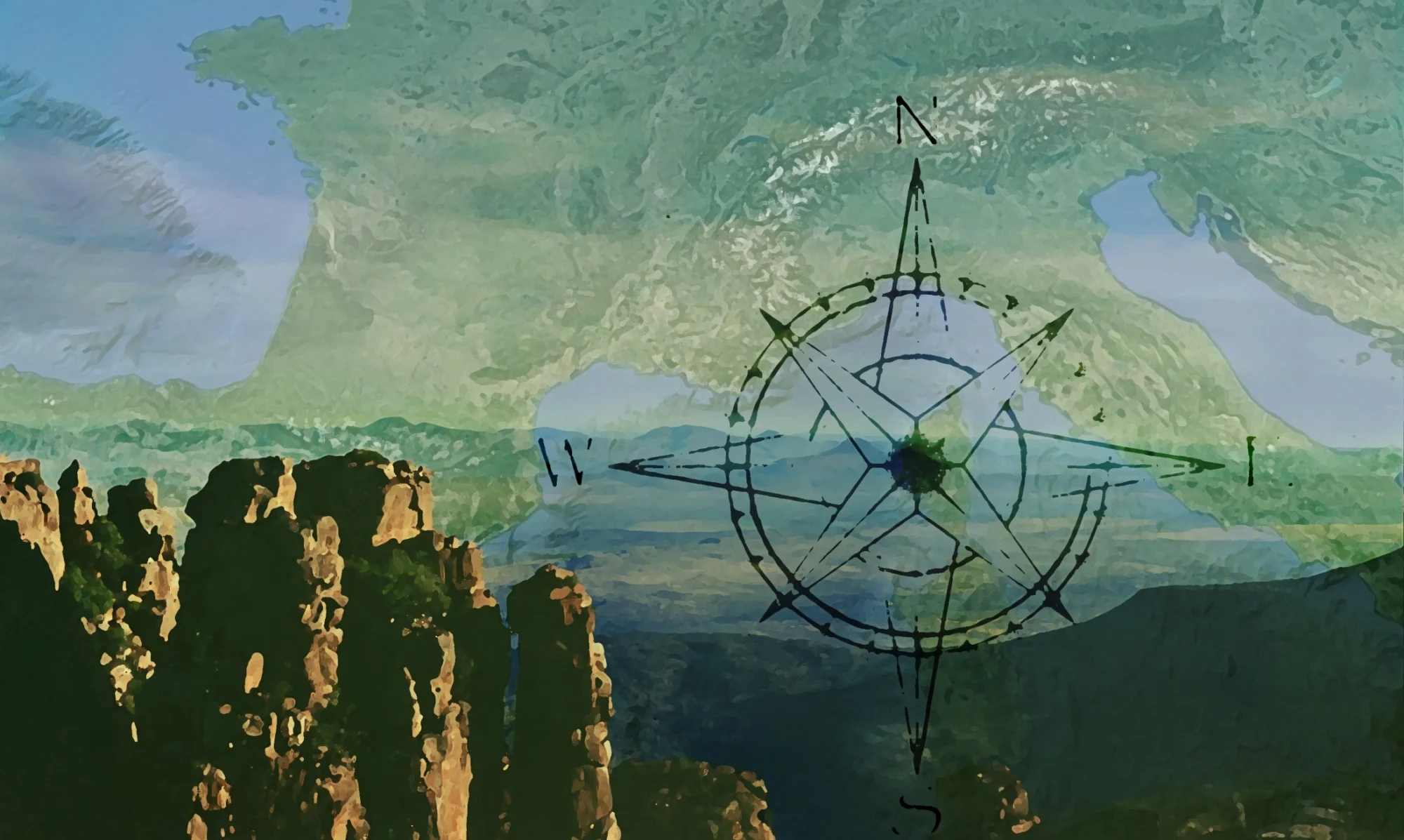“In the forests bordering on this line, there are found those lions called “man-eaters,” and moreover these forests are full of thorns and prickly shrubs.
Portions of this railway from Mombasa to Uganda are still being made, and here these lions fell on the workmen and destroyed them.
Such was their habit, day and night, and hundreds of men fell victims to these savage creatures, whose very jaws were steeped in blood.
Bones, flesh, skin and blood, they devoured all, and left not a trace behind them.
Because of the fear of these demons some seven or eight hundred of the labourers deserted, and remained idle;
Some two or three hundred still remained, but they were haunted by this terrible dread,
And because of fear for their lives, would sit in their huts, their hearts full of foreboding and terror.
Every one of them kept a fire burning at night, and none dared to close his eyes in sleep; yet would some of them be carried away to destruction.
The lion’s roar was such that the very earth would tremble at the sound, and where was the man who did not feel afraid?”
Roshan Mistari, 29th January 1899. From J H Patterson, The Man-eaters of Tsavo, 1907.
The Tsavo Man-Eaters were two large male lions in the Tsavo area of Kenya who killed around 135 workers engaged in the construction of a bridge of the Kenya-Uganda Railway, project led by British Lieutenant Colonel John Henry Patterson.
The construction of the bridge over the Tsavo river started in March 1898 involving several thousands of imported Sikh workers from British India along with local laborers. During the next nine months of construction, the two maneless lions prowled around the campsite, dragging workers from their tents at night and devouring them, despite thorn fences (still employed today in Masai villages to safeguard against predators) and campfires.
With the escalation of these attacks, numerous workers fled from Tsavo, leading to a halt in the bridge construction, and additional Sepoy Indian soldiers were dispatched to aid in the lion-hunting.
After repeated unsuccessful attempts to ambush the lions, Patterson shot and wounded the first lion on 9 December 1898, but it escaped. Later, it returned at night and began hunting Patterson back. He shot it again with a more powerful rifle and found it dead the day after.

To kill the second lion it took nine shots with different rifles. The first shot was fired from a platform that Patterson had built near a goat killed by the lion. After eleven days, two shots from a second rifle struck the lion while it was trailing Patterson and attempting to escape. The next day, Patterson shot it three more times with the same rifle and three more times with a third rifle, eventually killing it with the last shot in the head. He claimed it died still trying to reach him from a branch. It was the 29th December 1898, 20 days after the killing of the first lion.

The construction crew returned and finished the bridge in February 1899. The railways are still in use today under the control of the Kenya Railways Corporation and Tsavo lions continue to occasionally threaten humans.
The lions’ skins, sold to the Field Museum of Natural History of Chicago in 1924 for a sum of $5,000 were used to reconstruct the lions which are along with their skulls.
The two lions are known as FMNH 23970, and FMNH 23969, but the people named them back then “the Ghost” and “the Darkness”.
“The Ghost” was 9 feet 8 inches (2.95 m) long, and 3 feet 9 inches (1.14 m) high.
“The Darkness” was 9 feet 6 inches (2.90 m) long and 3 feet 11 inches (1.19 m) high.
Colonel Patterson published the book The Man-Eaters of Tsavo and Other East African Adventures in 1907. It is possible that he exaggerated the figures, suggesting that as many as 135 individuals had been consumed by the lions. This sensationalization may have played a role in boosting book sales. On the contrary, the Ugandan Railway Co. reported 28 deceased workers, with estimates ranging from 28 to 31 victims, based on their examination of Colonel Patterson’s original journal.
However, the same analysis also pointed out that the journal exclusively referenced Indian workers and that Patterson indicated that African worker casualties might have been substantially higher.
Recent studies on the isotopic signature analysis of their bone collagen and hair keratin were published in 2009 and suggested that the first lion ate the equivalent of 10.5 humans and the second 24.2 humans.
Though none of these modern studies have taken into account the people who were killed but not eaten by the animals. The diet of the victims could have also affected the outcome of the test, since many of the workers at Tsavo were Hindus and may have had a vegetarian diet, which could have led to categorize the victims as vegetarian species.
Theories for the man-eating behavior of lions have been reviewed by Peterhans and Gnoske, as well as Dr. Bruce D. Patterson (no relation to Colonel Patterson). Their discussions include the following reasons:
In 1898, a rinderpest outbreak (cattle plague) had a significant impact on the lions’ typical prey, compelling them to search for alternative sources of food.
The Tsavo lions might have become accustomed to discovering deceased humans near the Tsavo River crossing. This area was a frequent route for slave caravans headed to Zanzibar, the central hub of the East African slave trade.
An alternative argument indicates that the first lion had a badly damaged tooth that would have compromised its ability to kill natural prey. However, this theory has been generally disregarded by the general public, and Colonel Patterson, who killed the lions, personally disclaimed it, saying that he damaged that tooth with his rifle while the lion charged him one night, prompting it to flee.
Dr. Patterson also researched why the man-eating lions of Tsavo were maneless and concluded that mane absence was due to the hot temperature.
Patterson’s book was the basis for several films:
Men Against the Sun (1952)
Bwana Devil (1952)
Killers of Kilimanjaro (1959)
The Ghost and the Darkness (1996)
Prey (South Africa, 2007)
Prooi (Netherlands, 2016)

Tsavo lions are not the only man-eaters reported in recent history, here are some of the other famous lions:
From 1932 to 1947, in southern Tanzania, a particularly menacing group of 15 lions earned the ominous moniker Man-eaters of Njombe. These lions’ aggression stemmed from the British colonial administration’s attempts to curb a rinderpest virus outbreak. To contain the virus that was decimating local livestock, the government initiated the killing of wild animals such as zebras, wildebeests, and antelopes. This action led to a scarcity of prey for the lions, driving them to seek out alternative sources of food.
The Njombe pride exhibited a cunning approach, adopting nighttime movements and daytime hunts, a deviation from the typical behavior of lions. Prior to their eventual extermination by the British game warden, the Njombe pride tragically claimed the lives of an estimated 1,500 individuals.
In 1909, Chiengi Charlie, nicknamed the “White Lion” due to his unique light coloration, instilled fear across Zambia. His unusual appearance, resembling whiteness and sporting a half tail, led local communities to hold him in a sort of legendary awe. Roaming through villages, he hunted the residents, later joining forces with two other male lions. He managed to elude capture by villagers for an entire year, during which he devoured a total of 90 individuals. His reign of terror only came to an end when he was finally shot.
Between 2002 and 2004, a young lion named Osama, named after the Arabic word for lion, claimed the lives of more than 50 individuals. When he was shot in 2004, he was just 3 ½ years old. The youth of his age has prompted certain researchers to theorize that Osama acquired his people-hunting skills from his mother. Another hypothesis posits that he targeted humans due to a substantial abscess on one of his molars, similar to the Tsavo lions.
In 1991, the Lion of Mfuwe struck terror by claiming approximately six lives in Zambia’s Luangwa River Valley. An individual from California, USA, was on a safari visit during this period and reportedly patiently awaited his chance in a hunting blind for nearly three weeks before finally being presented with the opportunity to take down the lion. Renowned for its huge size, measuring close to 10 feet in length, the lion’s remains now reside at the Field Museum in Chicago.
In 1929, there was a lion that started following and attacking people near the Msoro Mission. This lion got the name Msoro Monty because of the similar sounds in the name. “Msoro Monty” was good at avoiding traps set for him. After causing a lot of deaths, he suddenly disappeared leaving no traces.
Namvelieza, or The Cunning One, killed 43 people near Kasawa, Zambia. Tanzania’s Paper Lion got his name because he seemed to drift from victim to victim randomly, like a scrap of paper floating in the breeze.
These man-eating lions are still subjects of oral stories passed on by inhabitants of the African villages and everybody can learn a lesson from these stories. Human interference (again!) is often the root cause of these killings. When ravaged by hunger and pushed to desperation, big cats can and will turn to humans for food.
